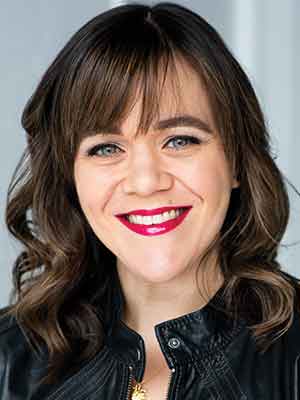I am honored to serve as the seventh Editor of the Voice and Speech Review (VSR) and offer this first issue in the 2023 Volume 17 with a dedication to my colleague Dr. Rockford Sansom.
I have been generously mentored by Rockford as I served in the role of Co-Editor in 2021 and 2022. I am grateful for the wisdom, kindness, and collegiality offered through his exceptional leadership.
At the outset of his tenure as Editor of the VSR in 2017, Rockford shared his vision for the journal which included supporting global, interdisciplinary engagement and exchange of knowledge, thereby advancing the field of voice studies (Sansom Citation2017). Over the past six years, this vision has come to fruition, exemplified by the growth and trajectory of the VSR which is now included in many highly respected databases and which was recently accepted in Scopus with an SJR Q1 ranking (Sansom Citation2022). Dr. Sansom’s dedication and generosity of spirit in leading the journal for the past six years will continue to have many positive impacts in our field, and I am grateful for the opportunity to have collaborated with him and for the support of Voice and Speech Trainers Association (VASTA) as I take on this new leadership opportunity.
As a member of VASTA since 2007, it is a privilege to serve our communities and our field through my leadership as Editor of the Voice and Speech Review.
In This Issue
The issue opens with Jane Boston’s “Voice Praxis: Social Positionality in UK Spoken Word Practice.” Boston investigates the changing work of the practitioner voice educator in UK learning contexts, and offers a theoretical framework to support socially responsive voice praxis. Jenna Brown offers “Imagery and Science in Singing Pedagogy: Redefining Imagination—A First Step to Resolving the Debate.” This article responds to an earlier VSR article which introduced the imagery and science debate in singing (de Lillis Citation2021). Brown’s article moves the debate forward, highlighting the need for a redefinition and understanding of the nature of imagination and its application to the creation of a new scientifically accurate imagery schema.
The article section continues with two studies. S.V. Narasimhan and S.Y. Aishwarya offer “Multiparametric Analysis of Voice at Madhya and Taara Sthayi in Indian Carnatic Singers.” Their study documents the vocal parameters in Madhya sthayi and Taara sthayi in Indian Carnatic singers. Tara Leiper offers “A Study of the Impact on Health and Wellbeing of Amateur Choir Singers as Face-to-Face Group Singing Moved Online.” The article examines and compares the perceived impact on health and wellbeing experienced by choir singers.
The article section closes with Guro von Germeten’s “Exploring Original Cast Recordings as ‘Vocal Scripts’: Navigating ‘Vocal Omnivorousness’ and Learning ‘The Sungs’ of Musical Theatre.” This article offers theoretical contributions toward establishing the term vocal script and explores ways of listening when interacting with a multifaceted vocal script.
The issue next highlights the 2022 Voice and Speech Trainers Association (VASTA) Conference. The section begins with Pamela Prather’s “The 2022 VASTA Presidential Address.” As with previous conferences, the journal also features perspectives from attendees. My thanks to this year’s contributors: Elisa Gonzales, Rachel Finley, and Sarah Nichols who shared “Converging Pathways: Reflections on the 2022 VASTA Conference.”
The Forum section opens with Rachel Velarde’s “Why Bones for Life?” This essay explores Velarde’s experience with a somatic practice, Bones for Life, as a means of accessing relief for a congenital defect of the left temporomandibular joint (TMJ). Christie Allen-Valeriano closes the Forum section with “Six-Week Soprano to Mix-Belt Estill Training Program: A Case Study in Coaching Challenges.” As regular readers of the journal will know, the My Journey to Now series consists of autobiographical reflections that honor and highlight distinguished practitioners from the world of voice. The journal is delighted to have Nancy Houfek share her story.
This issue concludes with four book reviews which offer a generous service to the voice field and to our community.
Thank you to all contributors. I hope you enjoy the issue.
Disclosure statement
No potential conflict of interest was reported by the author.
Additional information
Notes on contributors

Shannon Vickers
Shannon Vickers is Professor of Theatre Voice in the Faculty of Arts at the University of Winnipeg. She is an interdisciplinary artist-scholar with publications ranging from prolific research-creation in professional theatres across Canada, to impactful scholarship. Shannon has provided voice, text, and dialect coaching for theatrical productions across Canada. She is the recipient of The Dudley Knight Award for Outstanding Vocal Scholarship. The first season of her research podcast, Voicing Creativity, mobilizes research and artistry from leaders in the Arts and Humanities across Canada. Shannon is the Editor of the Voice and Speech Review.
References
- de Lillis, Antonio. 2021. “Imagery and Science in Singing Pedagogy: A Debate Introduction and Literature Review.” Voice and Speech Review 15 (1): 89–95. doi:10.1080/23268263.2020.1753342.
- Sansom, Rockford. 2017. “Editor’s Note.” Voice and Speech Review 11 (1): 1–2. doi:10.1080/23268263.2017.1374082.
- Sansom, Rockford. 2022. “Embracing the Interdisciplinary and Global Nature of Voice Studies.” Voice and Speech Review 16 (3): 269–273. doi:10.1080/23268263.2022.2110181.
